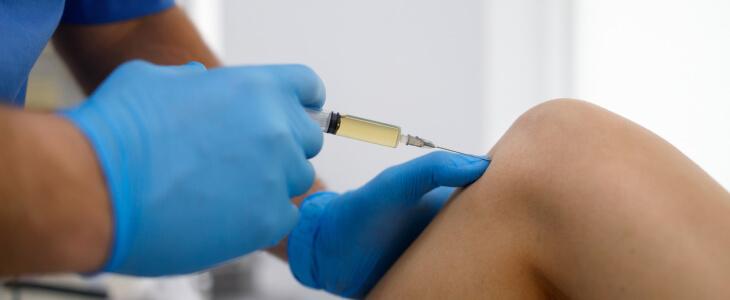What is platelet-rich plasma and what does it do?
For the body to survive, it is essential that there must be an adequate flow of blood to the cells, carrying oxygen and other nutrients and removing wastes. When we refer to platelet-rich plasma (PRP) we are not talking about some people having blood plasma that has a higher-than-normal concentration of platelets.
PRP is the result of a process that plasma has gone through to increase the number of platelets in a given amount of plasma. This is done by taking a small quantity of blood and dividing it. From one-half of the original amount, the platelets are removed and processed in a way that makes them more concentrated in a smaller amount of liquid. Then, in their richer new form, they are returned to the other half of the original blood sample and injected back into the same body from which the blood was taken.
The injection point will be at the site of an injury that is to be treated with what is now platelet-rich plasma. Because the platelets are packed with growth proteins and have properties that make them important in the clotting process, it is believed that increasing the level of platelets will promote faster healing.
As healthcare professionals learn more about PRP, research is continuing to explore and document its effectiveness and range. Current findings indicate that the processes that result in the richest concentration of platelets, including growth factors that they contain, do the most in encouraging tissue to heal.
Some of the areas in which success is being reported by patients include:
- Pain reduction
- Shorter recovery time
- Quicker return to functionality
- Less likelihood that additional or follow-up surgeries will be required
PRP’s Greatest Benefit?
PRP has garnered a fair amount of press due to well-known athletes, like Tiger Woods, Rafael Nadal, and the late superstar, Kobe Bryant, using the process to help them return to their respective sports more quickly than what was predicted. There is reason to believe that this process shows great promise, not just for the elite of the sports world, but for many people for whom other treatment methods have proven less than successful.
Another benefit of PRP is that it is highly unlikely to do any harm. That cannot be said about many other treatments, which is evidenced by the ever-present lists of possible side effects and complications. Since it is the body’s own cells that are being returned, with nothing foreign whatsoever added, the immune system is not activated. As long as proper techniques are used, there is little chance of any sort of negative response.
Contact Our Long Island Physiatrists For Treatment
At Long Island Spine Rehabilitation Medicine, we are committed to providing our patients with personalized care. Candidates for PRP are selected carefully, potential pain generators and injuries are identified on an individual and precise basis, the latest technologies are utilized, and injections are performed with live ultrasound guidance. To schedule an appointment, or if you just have questions about PRP treatments, please use our convenient online contact form by clicking here.
